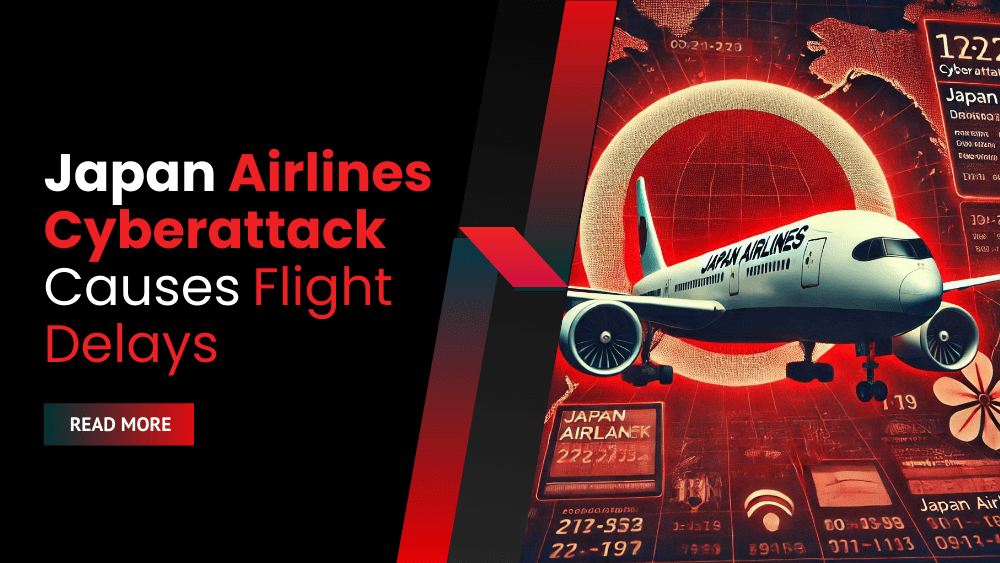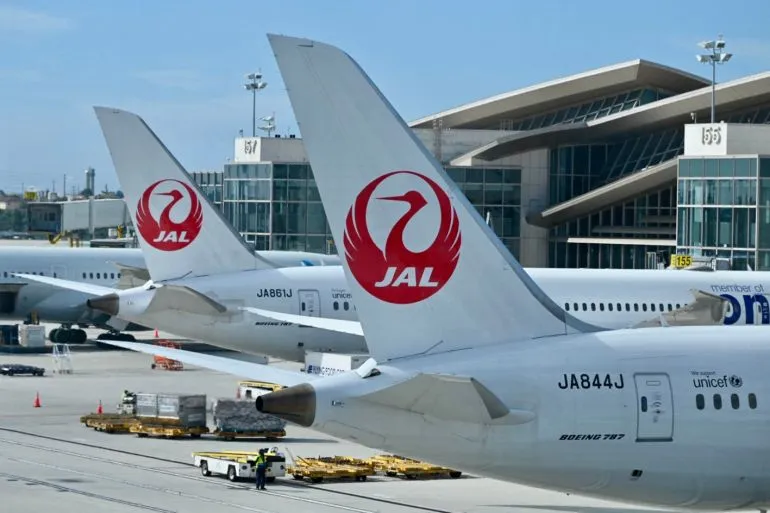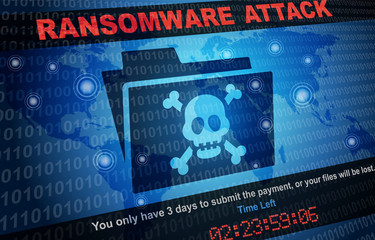Japan Airlines recently faced a cyberattack disrupting flights and highlighting vulnerabilities in aviation cybersecurity. Explore the incident’s details, real-world examples of similar breaches, and actionable insights on how airlines can enhance their defenses. Stay informed about the future of aviation security.

Introduction
In an era where technology drives every facet of travel, cyber threats are becoming a critical concern for the aviation industry. Recently, Japan Airlines (JAL) fell victim to a cyberattack that disrupted operations, delayed flights, and raised questions about the resilience of aviation cybersecurity.
This blog explores the details of the JAL cyberattack, its implications for the aviation industry, and actionable strategies to prevent future incidents. With real-world examples and expert insights, we’ll uncover why robust cybersecurity measures are no longer optional but essential for airlines worldwide.
Table of Contents
What Happened?
On December 26, 2024, Japan Airlines (JAL) experienced a cyberattack targeting its internal and external networks. The attack caused:
- System Malfunctions: Both domestic and international flights faced delays due to disrupted operations.
- Suspension of Services: Same-day ticket sales were temporarily halted.
- Mitigation Efforts: JAL isolated a malfunctioning router believed to be a part of the attack vector and restored systems within hours.
Thankfully, no customer data was compromised, but the incident highlighted the vulnerabilities within aviation networks during peak travel seasons.

Why Are Airlines a Prime Target for Cyberattacks?
1. High-Value Data:
Airlines store a vast amount of sensitive customer data, including personal information, payment details, and travel itineraries.
2. Critical Infrastructure:
Flight operations depend on interconnected systems, making any disruption catastrophic for logistics and safety.
3. Global Reach:
As airlines operate globally, they present an attractive target for cybercriminals seeking to exploit international vulnerabilities.
4. Rising Ransomware Threats:
Ransomware groups often target airlines, knowing that downtime costs millions, pressuring companies to pay ransoms quickly.
Implications of the Japan Airlines Cyberattack
- Operational Disruption:
Delays and suspended services during peak holiday seasons caused inconvenience for passengers and financial losses for the airline. - Customer Trust:
While no data breach occurred, the attack still raised concerns about the safety of sensitive passenger information. - Regulatory Scrutiny:
The aviation sector faces increasing regulatory pressure to strengthen cybersecurity defenses and avoid such incidents.
Real-World Examples of Aviation Cyberattacks
1. British Airways Data Breach (2018)
- What Happened? Hackers accessed the personal and financial details of 380,000 customers.
- Impact: British Airways faced a $26 million fine under GDPR regulations.
2. Polish Airline LOT Hack (2015)
- What Happened? A cyberattack grounded 10 flights, disrupting the travel plans of over 1,400 passengers.
- Cause: Hackers targeted LOT’s ground computer systems.
3. Cathay Pacific Breach (2018)
- What Happened? Data of 9.4 million passengers was stolen, including passport details.
- Impact: The breach severely damaged the airline’s reputation.

Lessons Learned from the JAL Incident
1. Importance of Incident Response Plans:
JAL’s quick isolation of the compromised router highlights the value of a well-structured incident response plan.
2. Regular Security Audits:
Frequent vulnerability assessments can identify weak points in IT infrastructure before attackers exploit them.
3. Employee Training:
Human error is often the weakest link in cybersecurity. Airlines must regularly train staff to recognize phishing attempts and other threats.
4. Collaboration with Governments:
Aviation cybersecurity requires global coordination, including threat intelligence sharing and compliance with international standards.
Conclusion
The cyberattack on Japan Airlines serves as a stark reminder of the growing cybersecurity challenges in the aviation industry. As digital threats evolve, airlines must prioritize cybersecurity to protect not just their operations but also the trust and safety of their passengers.
At a time when the world is more connected than ever, proactive measures, global collaboration, and constant vigilance are key to ensuring the skies remain safe from cyber threats.
💬 Join the conversation: What measures do you think airlines should adopt to strengthen their cybersecurity? Share your thoughts in the comments below!
References and Resources
- Japan Airlines Systems Back to Normal After Cyberattack – Reuters
- Cyberangriff Legt Airline Lahm – Bild.de
- British Airways Data Breach Explained – BBC News
More
- Shocking Chrome Extension Scandal: 600,000 Users’ Data Exposed in Massive Breach!
- AI-Driven Cyber Threats: Understanding and Mitigating the Risks of Artificial Intelligence in Cybersecurity
- Quantum-Resistant Cryptography: Protecting Data in the Age of Quantum Computing 15
- Multi-Factor Authentication (MFA): Strengthening Security with Layers of Protection 14
- Zed Attack Proxy (ZAP): A Hacker’s Best Friend 13
- What is an IDOR Attack? A Beginner’s Guide to Insecure Direct Object References 12
- VAPT Demystified: A Complete Guide to Vulnerability Assessment & Penetration Testing 10
- Hackers Playbook: 15 Common Cyber attack Techniques
- 9 Career Job in Cybersecurity : A Comprehensive Guide




3 Comments